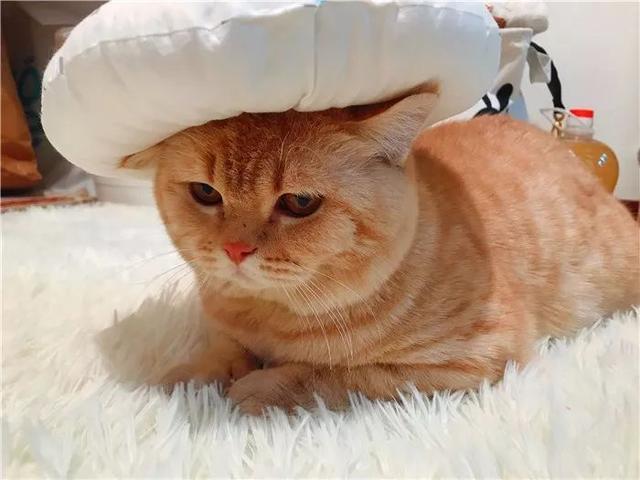Establishing a daily routine for your cat is essential for their physical health, mental stimulation, and overall well-being. Cats thrive on consistency, and a structured daily schedule can help reduce anxiety and enhance their happiness. In this article, we will explore key aspects of a cat’s daily routine, using long-tail keywords for clarity and SEO optimization.

Understanding the Importance of a Daily Routine
Creating a daily routine for your cat isn’t just about feeding and playtime; it encompasses their entire lifestyle. A well-structured routine can help your cat feel secure and content.
Keywords: importance of a daily routine for cats, benefits of structured cat care
Benefits of Structured Cat Care
- Reduces Anxiety: Predictable schedules can alleviate stress in cats, leading to a calmer demeanor.
- Improves Health: Regular feeding and exercise can prevent obesity and other health issues.
- Strengthens Bonding: Consistent interaction fosters a stronger bond between you and your feline friend.
Feeding Your Cat at Regular Intervals
One of the most critical aspects of a daily routine is feeding. Establishing a consistent feeding schedule is vital for your cat’s health.
Keywords: feeding schedule for cats, best cat feeding practices
Best Practices for Feeding Your Cat
- Scheduled Feeding: Choose specific times for meals to help regulate their appetite. Most cats do well with two meals a day.
- Quality Cat Food: Select high-quality cat food that meets your cat’s dietary needs based on their age and health.
- Portion Control: Measure food portions to prevent overfeeding and maintain a healthy weight.
Daily Playtime for Physical and Mental Health
Play is crucial for a cat’s well-being, providing exercise and mental stimulation. Incorporating regular playtime into your cat’s routine will keep them happy and healthy.
Keywords: daily playtime for cats, benefits of interactive cat toys
Ideas for Daily Play Sessions
- Interactive Toys: Use feather wands, laser pointers, and puzzle toys to engage your cat’s hunting instincts.
- Scheduled Play Sessions: Dedicate at least 15-30 minutes each day for interactive play. Cats are more active during dawn and dusk, so consider scheduling playtime during these hours.
- Solo Play: Provide toys they can play with independently, such as balls, stuffed mice, or treat-dispensing toys.
Creating a Cozy Resting Space
Cats need ample downtime to rest and recharge. A designated resting space is crucial for their comfort and relaxation.
Keywords: best resting spots for cats, creating a cozy cat bed area
Tips for Designing a Resting Space
- Comfortable Bedding: Provide soft, warm bedding in a quiet area away from disturbances.
- Safe Spaces: Cats often enjoy hiding spots, so consider adding a cat cave or blanket fort where they can feel secure.
- Temperature Control: Ensure the resting area is comfortable in terms of temperature, avoiding drafts and extreme heat.
Regular Grooming as Part of the Routine
Grooming is an essential part of your cat’s care routine, especially for long-haired breeds. Regular grooming can help maintain their coat and skin health.
Keywords: grooming routine for cats, benefits of regular cat grooming
Establishing a Grooming Schedule
- Frequency: Long-haired cats may require daily grooming, while short-haired cats can be groomed weekly.
- Brushing Techniques: Use the right tools for your cat’s coat type to avoid discomfort.
- Nail Trimming: Regular nail trimming is essential to prevent overgrowth and discomfort.
Health Check-ups and Veterinary Visits
Incorporating regular veterinary visits into your cat’s routine is crucial for monitoring their health and catching potential issues early.
Keywords: regular vet visits for cats, importance of cat health check-ups
Importance of Routine Veterinary Care
- Annual Check-ups: Schedule yearly veterinary visits to ensure your cat is healthy and up-to-date on vaccinations.
- Monitor Weight and Diet: Regular vet visits allow you to assess your cat’s weight and dietary needs, making adjustments as necessary.
- Dental Care: Discuss dental health with your vet and consider professional cleanings if needed.
Enrichment Activities for Mental Stimulation
In addition to playtime, incorporating enrichment activities into your cat’s routine can help keep their minds sharp and engaged.
Keywords: mental stimulation for cats, cat enrichment activities
Ideas for Enrichment
- Puzzle Feeders: Use puzzle feeders to make mealtime more engaging and mentally stimulating.
- New Toys and Challenges: Rotate toys regularly to maintain interest, and consider DIY projects like creating obstacle courses.
- Cat Trees and Scratching Posts: Provide vertical space for climbing and scratching, which satisfies natural behaviors.
Providing Social Interaction
Cats are social creatures, and regular interaction with you or other pets is vital for their emotional well-being.
Keywords: social needs of cats, interacting with your cat
Ways to Interact with Your Cat
- Quality Time: Set aside time each day to cuddle, pet, or simply sit with your cat. Your presence can be comforting.
- Training Sessions: Teach your cat tricks or commands using positive reinforcement. This not only provides mental stimulation but also strengthens your bond.
- Playdates: If your cat enjoys the company of other pets, consider arranging playdates with familiar animals.
Monitoring Behavior and Adjusting the Routine
As your cat ages or their health needs change, it’s essential to monitor their behavior and adjust their routine accordingly.
Keywords: observing cat behavior changes, adjusting cat care routines
Signs to Monitor
- Changes in Appetite: A sudden increase or decrease in appetite may indicate health issues.
- Activity Levels: Keep an eye on your cat’s energy levels. Lethargy or excessive sleeping can be signs of illness.
- Behavioral Changes: Any significant changes in behavior, such as increased aggression or hiding, warrant a conversation with your vet.
Conclusion
Creating a daily routine for your cat is vital for their physical and emotional well-being. By incorporating regular feeding, playtime, grooming, and social interaction into their daily schedule, you can ensure that your feline friend remains healthy and happy. Pay attention to their changing needs and be flexible in adjusting the routine as necessary. With a little effort, you can provide a nurturing environment that enhances your cat’s quality of life.

Comments (0)